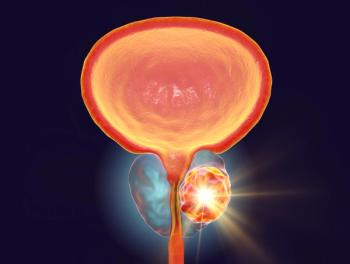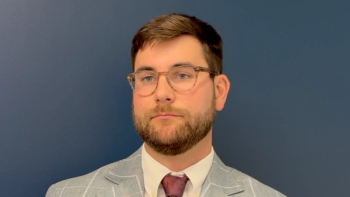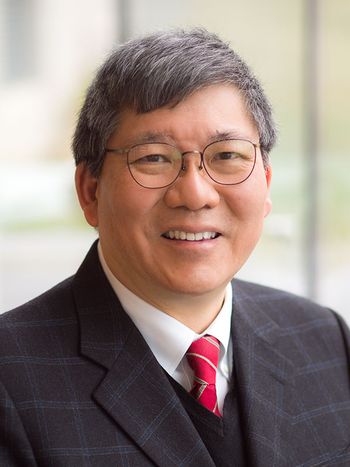
Outlining Considerations for the Rare Lymphoma Treatment Paradigm
Two hematologic oncologists defined rare lymphomas and highlighted challenges and recent developments associated with these disease types.
Lymphoma is a relatively common disease, in and of itself, with non-Hodgkin lymphoma (NHL) accounting for about 4% of all cancer diagnoses, or an estimated 80,350 diagnoses in 2025, and Hodgkin’s lymphoma accounting for about 0.4% of all cancer diagnoses, or an estimated 8,720 diagnoses in 2025.1,2 However, despite being typically disaggregated into those 2 types, each type encompasses several subtypes, with non-Hodgkin lymphoma accounting for more than 90 specific disease states.3
According to Andrew D. Zelenetz, MD, PhD, medical director of Quality Informatics at Memorial Sloan Kettering Cancer Center, most lymphomas can be classified as rare lymphomas.
“It turns out that almost every lymphoma is a rare lymphoma, with only a couple of exceptions…. When you lump all lymphomas [together], it ends up being pretty high on the list of common malignancies. The problem is that if you deal with real patients, [they] do not have generic lymphoma; they have the individual subtypes. That is a real challenge that we have,” he said in a conversation with CancerNetwork®.
To better elucidate the current state of treatment for these rare diseases, CancerNetwork® spoke with Zelenetz and Neha Mehta-Shah, MD, MSCI, an associate professor in the Division of Oncology of the John T. Milliken Department of Medicine of Washington University, about these rarer lymphoma variants. Specifically, identifying and addressing unmet needs were among the topics discussed, as well as overcoming barriers to accessing care and considerations regarding funding for research.
Clarifying Unmet Needs in Rare Lymphoma Treatment
According to Mehta-Shah, rare lymphomas may often be understudied, as diagnoses can be challenging, and local pathologists may not have been exposed to these disease variants before.
“In other diseases, we are fortunate to have these very large studies where half the patients got treatment X and half the patients got treatment X plus Y, and you can inform patients about their choices, and the risks [and benefits] of adding Y to X,” she expressed in an interview with CancerNetwork. “Whereas in rare diseases and rare lymphoma, sometimes in the whole study to help inform a patient, therapy could have [enrolled 15 to 30] patients, all of whom got the same therapy. It was not directly compared with any other therapy, and sometimes you are extrapolating information from related diseases to their disease. It can be hard to take care of these patients because it requires digesting the information that is available and sometimes relying on expert consensus guidelines to help guide your decision-making.”
She further highlighted this in her assessment of the treatment paradigm for marginal zone lymphoma (MZL), a rare lymphoma variant that contains numerous subtypes. She emphasized that each subtype is a fundamentally different disease with different biologic drivers and tendencies to impact the body in different ways. Trials will often evaluate a multitude of MZL subtypes and rely on data in subgroup analyses, retrospective analyses, or real-world registries to inform treatment for these patients.
“Those numbers get really small in helping to understand the likelihood of response or the duration of response for a particular patient,” she explained. “While we do not rely on retrospective studies in all areas of medicine to inform our practice in rare diseases, sometimes retrospective studies [and] real-world registry studies may be the best type of information we have to help guide our clinical decision making or inform development of national guidelines.”
Zelenetz highlighted that a particular challenge that emerges when developing novel therapies for rare lymphomas is that sponsors may be less likely to feel compelled to fund research for a highly specialized variant of lymphoma against a more broadly characterized population, such as indolent lymphoma.
To illustrate this phenomenon, he highlighted findings from the phase 3 GALLIUM trial (NCT01332968), which was generally a positive trial, displaying benefit with obinutuzumab (Gazyva) vs rituximab (Rituxan) in patients with indolent lymphomas, but in the absence of MZL, an even more pronounced benefit emerged among patients with follicular lymphomas.4 Despite this apparent benefit, due to the relatively small sample size, these findings remain underpowered, and little progress had been made in assessing potential benefit in a subset of patients with lymphoma.
Zelenetz explained, “We sometimes ignore the fact that there are these differences. They are all slow-growing lymphomas, [and we] study them all together, so you end up not learning much. Patients get exposed to the drugs, but we do not ever have enough power in the subgroup to know whether that small subgroup––that rarer lymphoma––is actually [experiencing] any benefit.”
Additionally, Mehta-Shah suggested that better considerations can be made for mitigating long-term toxicities and late-term chemotherapy effects, as well as monitoring quality of life considerations for patients with rare lymphomas. One organization she highlighted was the Lymphoma Epidemiology of Outcomes (LEO) consortium, which initiated a study (NCT02736357) to better understand non-Hodgkin lymphoma (NHL) by using cohort study data, specifically patient-reported outcomes, to help improve survival and quality of life for these patients.5,6
Furthermore, she highlighted an emerging initiative by the FDA to require randomized phase 3 trial data to support approvals. This has further complicated practice for these rare lymphomas, as previously approved agents, such as romidepsin (Istodax), end up with their label removed, which limits the comparator options in pursuing phase 3 trials for rare lymphomas. Romidepsin’s label in peripheral T-cell lymphoma (PTCL) was withdrawn in May 2022.7
Closing the Community Gap in Oncology Care for Rare Lymphomas
In Zelenetz’s experience, community practices may be particularly challenged in treating these rare lymphoma subtypes, as many may not even be equipped to treat lymphoma, let alone have specialized centers for lymphoma subtypes.
“If you're in an academic medical center, you know you can sub-specialize into a group. And you have your T cell lymphoma doctors, and your follicular lymphoma…doctors,” he expressed. “But if you're in the community, even if you are willing to see lymphomas, [they] are not your bread and butter. You do not have time to focus and learn about these rare lymphomas. You might inadvertently apply principles of, ‘Oh, I am going to use X for a certain disease because it works in Y,’ not understanding that, for this rare entity, [X] is not really the right treatment.”
Additionally, Mehta-Shah expressed that diseases she identifies as “ultra-rare” may end up only becoming relevant in community practice when a patient presents with the disease.
“As the lymphoma expert, I may only see some of these diseases [1 to 3] times a year. If you were a community doctor, you probably never see patients with these diseases, and it only becomes relevant to you when the patient is sitting in your office or in the hospital with you,” she explained.
She further remarked that making therapies readily available in the community setting will be paramount to help address an unmet need in this setting.
“One of the challenges we face is how to make those therapies easily available in the community and help doctors in more rural areas or patients who are far from large academic medical centers. How do we give them access to those therapies in a way that is also safe, and [ensures] that other providers feel comfortable giving those drugs and monitoring for the unique toxicities of those therapies?” she expressed.
Addressing Barriers to Care for Patients Undergoing Treatment for Rare Lymphoma
In diagnosing patients with rare lymphomas, Mehta-Shah believes emergent technologies, including those powered by artificial intelligence (AI), may provide an answer to improve the current landscape. Specifically, regarding the integration of molecular and pathologic features into pathology workflows, she suggested that this may be an area of investigation that may better individualize treatment for patients.
An additional consideration she discussed was the development of “off-the-shelf” CAR T-cell therapies, which she explained might help deliver these therapies to patients in a timelier fashion.
“Patients who are looking towards receiving CAR T-cell therapy usually need insurance approval, [and] before that, they need certain types of testing. Then, once they have insurance approval, they can do the collection,” Mehta-Shah said. “Then there's a period of many weeks of manufacturing before the actual CAR T-cell product gets to the patient. Improving [vein-to-vein time] is critical.”
Finally, Mehta-Shah discussed overcoming logistical constraints for patients, including offering oral or self-administered medications, which could help patients who may not be able to receive regular treatment in clinic, or for those who might be vulnerable to financial toxicities. Expressing that oral therapies may be particularly costly for these patients, she explained that, even with aid from nonprofit organizations through supplemental grants, the high cost of treatment has emerged as an ongoing challenge in the field.
With respect to overcoming funding issues from a clinical rare lymphoma research standpoint, Zelenetz suggested that a bit of perseverance from investigators may help to attain the resources necessary to undergo research for rarer lymphoma variants. To that end, he touched upon his experience with zanubrutinib (Brukinsa) plus venetoclax and obinutuzumab in chronic lymphocytic leukemia (CLL) during the phase 2 BOVen study (NCT03824483), to help facilitate research in an entirely different lymphoma subtype, mantle cell lymphoma (MCL).8
“I went, hat in hand, to the sponsor, and I said, ‘Well, look how good it is in CLL. MCL is a lot like CLL; why don't we try it?’ And not only did we treat a rare disease, MCL, but we treated a rare subpopulation of a rare disease, only P53-mutated. Why? Because that was a group that, while chemoimmunotherapy had done well…in the first line for most patients with MCL, patients who had P53 mutations did poorly with conventional chemoimmunotherapy. We were able to convince the sponsor to let us do a cohort of patients with P53-mutated disease, which turned out to be quite successful.”
He concluded by emphasizing that having a sponsor who is willing to “pony up” is essential, noting that they often make a return on their investment, but that it may not always be a guarantee.
Funding for Rare Lymphomas: Sustaining Research Through Uncertainty
Finally, Zelenetz expressed a hope that funding will persist despite funding cuts at the federal level. Calling the United States the “envy of the world” regarding its robust health care system, he expressed a hope that NCI funding will persist through proposed cuts in Congress.
“We [are] able to move medical science ahead, and it's in part because you can go to the government and say, ‘Listen, there's this group of patients. They do not do very well. I want to study them,’” Zelenetz explained. “That has been an incredibly valuable source of funding, [for original ideas and] making some of those initial discoveries, and understanding how the different diseases work, so that we can ask, ‘[Will] this drug work here or there?’”
In a similar vein, Mehta-Shah concluded by urging the field to keep these overlooked patient groups in mind when conducting research for lymphomas, particularly during a period where scientific funding has suffered. She stressed the importance of advocating for rare diseases and continuing to improve upon treatment strategies for patients with cancer.
“It has always required a group effort on the part of patients, advocates, scientists, clinicians, and clinical researchers in helping patients with these rare diseases, but that teamwork is going to become more essential in the current era,” Mehta-Shah explained.
References
- National Institute of Health. SEER Cancer Stat Facts: Non-Hodgkin Lymphoma. Accessed October 9, 2025. https://tinyurl.com/2s3p3m3k
- National Institute of Health. SEER Cancer Stat Facts: Hodgkin Lymphoma. Accessed October 9, 2025. https://tinyurl.com/3f4rwrzu
- Lymphoma Research Foundation. About Lymphoma and Lymphoma Subtypes. Accessed October 9, 2025. https://tinyurl.com/vkxdctrc
- Townshend W, Hiddemann W, Buske C, et al. Obinutuzumab versus rituximab immunochemotherapy in previously untreated iNHL: final results from the GALLIUM study. HemaSphere. 2023;7(7):e919. doi:10.1097/HS9.0000000000000919
- Lymphoma Epidemiology of Outcomes (LEO). About LEO. Accessed October 9, 2025. https://tinyurl.com/2p2xyjex
- The Lymphoma Epidemiology of Outcomes (LEO) cohort study (LEO). ClinicalTrials.gov. Updated June 22, 2023. Accessed October 9, 2025. https://tinyurl.com/mv6dzkan
- Bristol Myers Squibb statement on Istodax® (romidepsin) relapsed/refractory peripheral t-cell lymphoma U.S. indication. News release. August 2, 2021. Accessed October 9, 2025. https://bit.ly/37hlxx9
- Kumar A, Soumerai J, Abramson JS, et al. Zanubrutinib, obinutuzumab, and venetoclax for first-line treatment of mantle cell lymphoma with a TP53 mutation. Blood. 2025;145(5):497-507. doi:10.1182/blood.2024025563
Newsletter
Stay up to date on recent advances in the multidisciplinary approach to cancer.


















































































